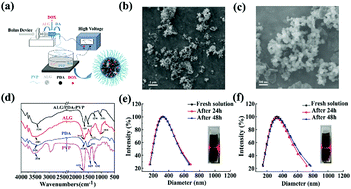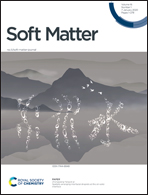Preparation of electrospray ALG/PDA–PVP nanocomposites and their application in cancer therapy†
Abstract
In this study, sodium alginate (ALG)/poly dopamine (PDA)–polyvinylpyrrolidone (PVP) nanocomposites was synthesized via a one-step electrostatic spraying method. The spinning solution of ALG and dopamine was electrostatically sprayed into an alkaline solution of PVP, calcium chloride and tris buffer (pH = 8.5), in which the gelation of ALG and the polymerization of dopamine could be simultaneously triggered. PDA hence produced possesses a high photothermal conversion efficiency, while the PVP that was facilely conjugated onto the surface of nanocomposites improves the colloidal stability and compatibility of the material. Moreover, the ALG renders the nanocomposite excellent drug (doxorubicine, DOX) loading capacity. Promisingly, the temperature increment during the PTT process could promote the DOX release, thus enhancing its therapeutic effect. The in vitro/in vivo biosafety and tumor treatment experiments further corroborate that the ALG/PDA–PVP nanocomposites have remarkable biocompatibility and synergism for tumor hyperthermia and chemotherapy. Consequently, such a one-step electrospray strategy provides a new way for designing nanomaterials and is expected to significantly promote the development of organic photothermal therapeutic agents with excellent bio-compatibility.



 Please wait while we load your content...
Please wait while we load your content...